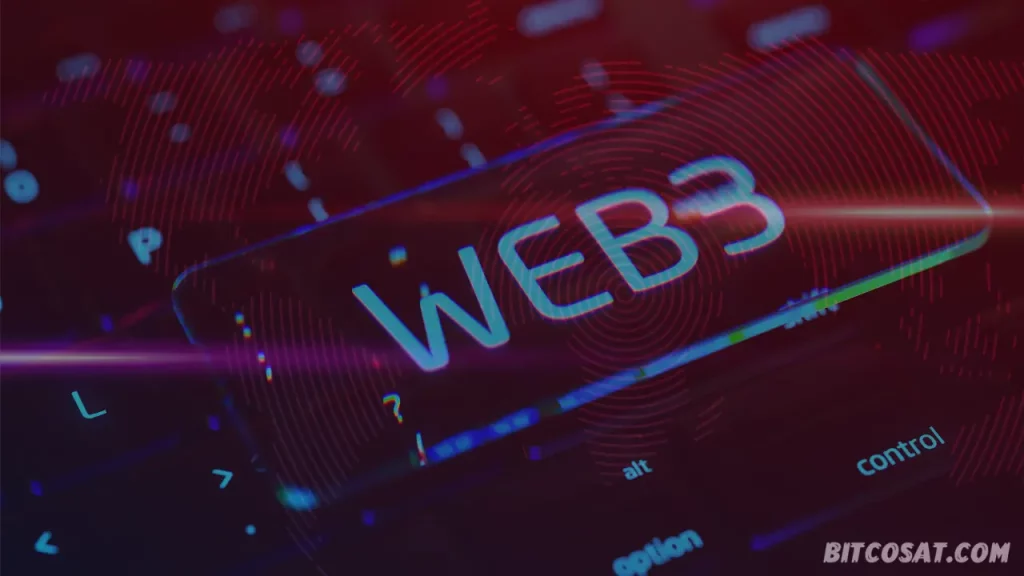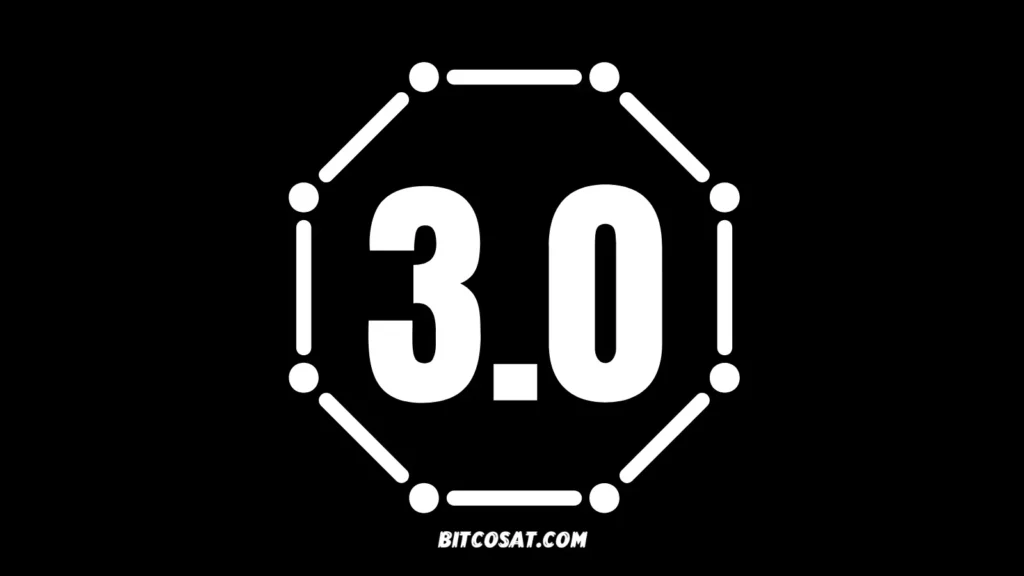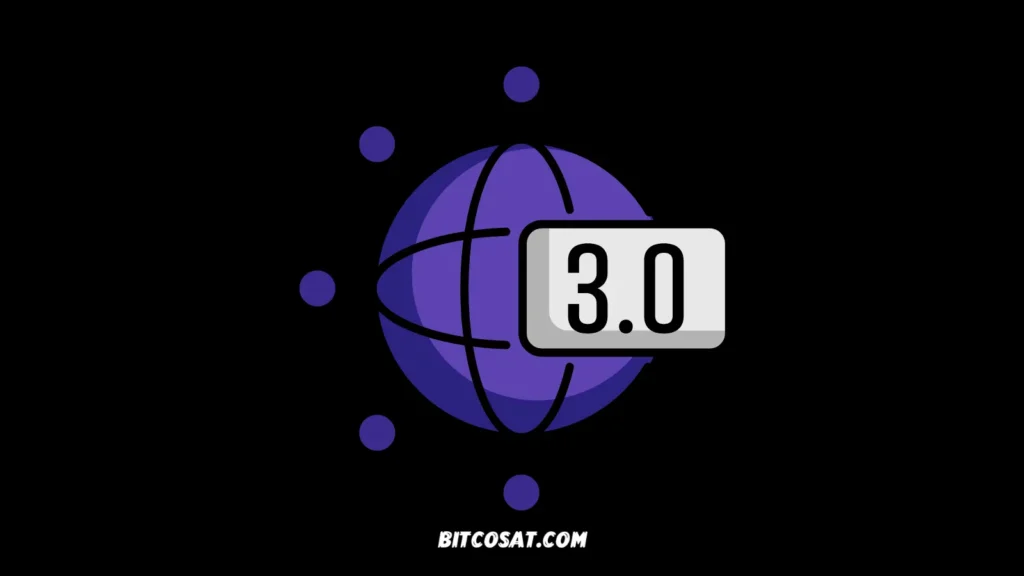Web3 technology has become the talk of the town with many large technology companies entering this space.
But what does the new technology represent and what is the difference between it and Web2? The Internet generation we live in currently?
In this guide, we will discuss all the details regarding the difference, as we try to predict what Web3 will look like and how it relates to blockchain and crypto.
Definition of web1 or Web 1.0?
The invention of the Internet changed the world, and it went through many developments starting with the Web 1.0 phase, which was pioneering in that period and a less advanced form than what we are witnessing in the current period.
The Internet Provides content and displays information about what we call websites nowadays.
Use cases and examples of Web1
More users produced their content via MySpace and LiveJournal sites.
There is no real dividing space between the first and second generations of the Internet.
There is no great technological innovation that can separate them. Rather, these names are just official names.
However, fewer companies entered the first generation, as ads were scarce, and a large number of them were banned from many websites.
In addition, this generation of the Internet consists of static pages and hosting servers from the Internet service provider.
The information was available from a central source and there was no possibility to modify the content being published or the ability to change the design of the website.
Web1 Cons
Less engagement through added online content and changed page design.
For example, no pages such as Wikipedia encourage public participation.
Rather, personal blogs existed before the advent of Facebook and Twitter, in addition to adhering to a specific type of content.
Another downside is when applications are downloaded and users cannot see how they work or change them, the source code is not available to the public.
Definition of Web2 or Web 2.0?

These terms were used specifically with the spread of the dot-com era, a more complex era of the Internet.
More companies entered the second generation of the Internet, unlike the first generation.
The new websites thought about how to generate income and user interaction more with the platforms.
Most of the popular new companies also survived the market crash.
Use cases and examples of Web2
There is a great deal of creativity in the second generation of the Internet. For example, these sites allowed the design to be modified in greater detail.
In addition, the founding code for these websites was open source, which means that anyone with the appropriate technological expertise can modify and analyze it.
The technology has given greater capabilities to corporate users. For example, it has allowed users to add comments to products on the website, and to edit websites like Wikipedia.
Facebook and Twitter platforms also allow users to interact with them in a greater capacity than previous platforms that relied on social networking.
Web2 Cons
There are some drawbacks to the second generation, including censoring information that conflicts with society on platforms such as Facebook and Twitter.
Although allowed to invest in developing ideas for these platforms.
In addition, the servers that use the applications are not guaranteed, and it can have a financial impact on those who deal with them.
Payment services also require adherence to certain guidelines, and payment cannot be accepted if these standards are not respected.
In short, the second generation of the Internet was characterized by greater technical capabilities of companies adhering to a specific set of rules.
Definition of Web3 or Web 3.0

The concept of the third-generation Internet is a popular term in technology news recently.
Because of talk about it being more secure, decentralized, and improving the second generation of the Internet.
The term is often associated with different applications, as Gavin Wood, one of the founders of the Ethereum Foundation, is believed to have first used the concept in 2014.
The concept refers to linking blockchain technology to connect applications and achieve decentralization.
Compared to the second generation, users access information hosted on the servers of third-party companies.
Likewise, modern applications are added to other companies’ servers, such as Google Cloud or Amazon’s cloud computing services.
The third generation of the Internet allows the development and maintenance of decentralized applications.
It is used in the media to explain future Internet technology.
As many companies have access to this new and improved Internet, blockchain technology will play an essential role in building.
Web3 features
Just as the second generation provided development in the static pages of the first generation, the third generation should provide technical development. Is this present?
Yes! Applications that adhere to Web3 rules are available but their spread is currently gradual.
It is subject to follow-up and experimentation to be used as a future model for the Internet.
However, the main advantage of the third generation remains the possibility of sharing data.
Or it represents an alternative to data ownership, where blockchain verifies information and contributes to the information being stored.
The third generation also contains the concept of the metaverse and the use of advanced 3D graphics, in addition to augmented and virtual reality for applications on Web 3.0.
The third generation takes advantage of smart contract technology, reducing the need for third-party intermediaries and creating a trustless form of the Internet.
Web3 use cases and examples
For an application to be included in the third generation of the Internet, it is necessary to use blockchain capabilities.
That is, adding all cryptocurrencies, decentralized applications that use crypto, DeFi projects, NFT, and DAO.
That is, entire encryption projects are ready to be added to the third-generation web.
This is what we see starting as Bitcoin, NFT markets like OpenSea, cryptocurrency-backed social media platforms like Steemit, play-to-earn games, or pay-to-earn sports platforms like Sweatcoin.
Benefits of Web3?
There are many benefits, but who benefits primarily from these benefits, and can a person lose from the development of this technology?
The answer is that all Internet users will benefit if the proposed changes are widely adopted.
The third generation of the Internet means that every user can contribute to the way the Internet is built.
So the power of big tech companies will be reduced and distributed among users.
The new Internet is a sustainable model that increases connectivity and smart contracts will help transform the Internet into a trusted system.
The use of AI and the Semantic Web also helps humans better harness the power of technology with less possibility of human error.
Can Web3 Internet technology succeed?
There is a loss from the advent of Web3 from the impact of decentralization plans on large technology companies that benefited from the transition to the second generation.
For example, some CEOs expressed their lack of optimism about the new transformation. Elon Musk, founder of Tesla, described the development as a “marketing trick.”
Twitter founder Jack Dorsey said that achieving decentralization is impossible as major technology companies will not allow them to give up their current power.
For Web3 to become a reality, greater adoption of blockchain technology is required.
Positive trends towards this development have been achieved relatively recently.
If this continues, we will see some changes soon.
Basic differences between Web2 and Web3?

There are some main differences between Web2 and the Web3 in terms of:
Decentralization
Individuals control their data online through decentralized networks.
The network is not supported by an individual or institution, but rather responsibilities and rewards are shared between each person involved in operating the blockchain.
Privacy
Privacy is a concern for many users due to the data leak issue that has been in the news in recent years.
Web3 provides a higher degree of privacy and distributed personal data stores will provide individuals with greater control over their data.
Some believe this will allow users to rely less on third-party companies to manage their data
Others say that the idea of making information publicly available on the blockchain contradicts the concept of greater privacy for users.
Trust
Some views suggest that smart contracts will lead to the creation of a trusted Internet.
Individuals would not need to place their trust in external actors, and trades could be executed based on features encoded in the smart contract.
The Internet will also become permission, meaning any user can verify the validity of transactions or work on the blockchain.
In addition, features such as buying or selling can be used without requesting permission from a third party.
Greater connection
The Internet of the future will allow for greater connectivity, as the use of semantic data can help create new ways of organizing, using, and discovering information and lead to a significant increase in user experience.
Are you preparing for the new Internet?
Web3 is still in the early stages of development so one cannot know if it is ready.
Some aspects can be verified, and other goals, such as decentralization, will of course face some decline.
Individuals also expect a great deal of change in terms of the way they interact with the Internet over the next ten years, as more opportunities exist.
To get the latest information about Web3 and other technologies in the blockchain industry, head to Bitcosat Telegram and you will benefit from developments by talking to like-minded people.
